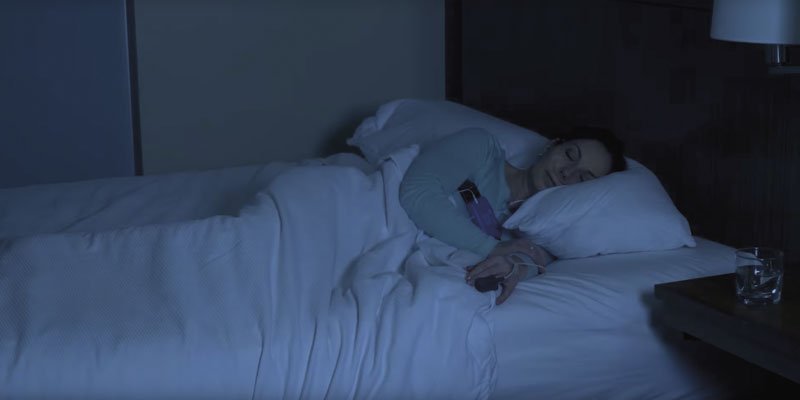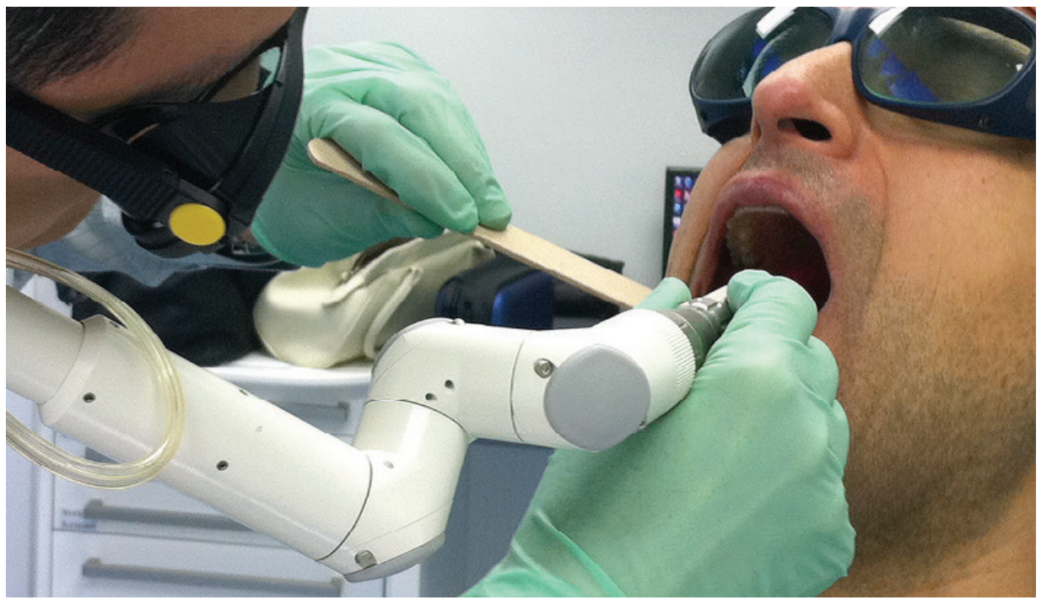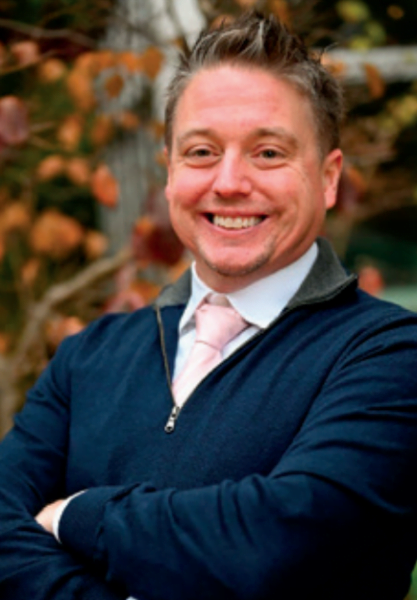Dr. Keith Gressell’s top picks for opening an Airway Center include two crucial tools: Zmachine Home Sleep Testing and the LightWalker Laser.
 by Dr. Keith Gressell
by Dr. Keith Gressell
When summarizing the development of your practice style and office operations, no quote is as succinct and precise as this one from James Clear: “You do not rise to the level of your goals; rather, you fall to the level of your systems.” I had lofty goals when I purchased my office and decided to convert it into my vision of an Airway Center. Initially, my systems did not match these lofty goals.
The Importance of Systems
After a period of trial and error, I discovered many ways not to establish my Airway Center. I regrouped and focused on improving my systems and protocols, which revealed the steps necessary to create the Airway Center I envisioned. Two crucial tools emerged as essential in this process: a reliable and comprehensive home sleep test (HST) and extensive training in laser therapy for treating obstructive sleep apnea (OSA).
Key Tool for Diagnosis: Zmachine Home Sleep Test (HST)
Traditionally, diagnosing OSA required overnight polysomnography tests conducted in sleep clinics. The Zmachine Synergy offers a convenient alternative to in-lab sleep studies, allowing patients to test in the comfort of their own homes. This device is patient-friendly and easy to use. General Sleep offers a streamlined, dentist-centered approach to obtaining an accurate diagnosis from a board-certified sleep specialist. The interpreted report includes treatment recommendations and alternatives following best practices in sleep medicine. The Zmachine Synergy HST simplifies the diagnostic process, increasing patient compliance by reducing the steps they need to take.
The Zmachine device provides extensive information, combining FDA-cleared EEG-based sleep staging technology with a full complement of respiratory sensors and tri-axis body position monitoring. It is a 9 channel, Type II device that is also very affordable. The EEG is collected from the mastoids and is self-applied by the patient, making it easier on both the practice and staff.
Key Tool for Treatment: Fotona LightWalker Laser
From day one, my choice of laser was clear. The LightWalker laser from Fotona is a dual-wavelength laser utilizing Er:YAG and Nd delivery systems at 2940nm and 1064nm, respectively. This laser system allows me to treat snoring and address soft palate collapsibility, a potential factor in OSA, using the Nightlase C3 protocols. This treatment naturally opens the airway, aiming to achieve the same results as wearing an oral appliance therapy (OAT) or continuous positive airway pressure (CPAP) device without the need for these devices or their potential side effects. While not a full replacement treatment yet, it is an excellent option for patients with tolerability or compliance issues and can be used as an adjunct treatment.
“This laser system allows me to treat snoring and address soft palate collapsibility using the Nightlase C3 protocols.”
The Fotona LightWalker laser, with its patient comfort and compliance benefits, is a valuable addition to a dentist’s toolset for treating airway restrictions. The procedure’s ease, coupled with no pain or downtime following treatment, made it the clear choice for me. I have seen other companies’ options for similar treatments and own some of those lasers. However, the Nightlase C3 protocol, as taught by Dr. Harvey Shiffman for Fotona, is the most patient-friendly and successful treatment for soft palate collapsibility in patients with snoring or OSA issues.
 Combining Tools for Optimal Results
Combining Tools for Optimal Results
The combination of the Fotona laser and the General Sleep’s Zmachine Synergy home sleep testing device became the diagnostic and treatment cornerstones of my practice. This powerful and transformative combination benefited both my practice and my patients. It eliminated guesswork about whether patients would be tested in a timely manner and if they would follow through with the necessary steps. Each extra step you eliminate increases compliance rates exponentially.
Consistency in Diagnosis and Treatment
One of the most critical uses of the Fotona laser and Zmachine device is in titration and post-treatment studies. Many colleagues rely on attended polysomnography for initial diagnostic studies and then use non-FDA-approved sleep tracking devices to determine treatment effectiveness. I prefer using the same HST for pre-, mid-, and post-treatment efficacy to provide consistent “apples to apples” comparisons. This approach also allows patients to see the clear, easy-to-read results themselves, which is invaluable for skeptical patients. Having a third-party diagnostician with no vested interest recommending the best treatment based on objective data ensures the best interest of the patient is maintained. This teamwork approach to therapy and treatment ensures top-notch care and personalized treatment, resulting in better breathing and better sleep for more patients.
Continuous Education and Improvement
The landscape of dental sleep medicine is constantly evolving. The most important advice I can give fellow dental sleep professionals is to continuously educate themselves on the most effective testing and treatment options available for OSA patients. My desire to maintain and enhance the services my dental sleep practice offers is a constant in my professional activities. I am always looking for ways to expand my knowledge base in the field of dental sleep medicine, from sleep testing tools to therapy options. This ongoing process involves analyzing, revising, and improving my processes and ensuring that checks and balances are in place. I hope that other dentists can gain insight from my experiences and use them as guideposts to achieve their goals of establishing a patient-centered dental sleep practice.
To learn more about General Sleep’s Zmachine Synergy, visit http://www.generalsleep.com/.
Read about how Drs. Geoffrey Skinner and Joseph Zelk partnered for a more efficient workflow and how the Zmachine brought even more efficiency to the mix. https://dentalsleeppractice.com/less-time-between-screening-treatment-with-a-trusted-partner/
 Dr. Keith Gressell grew up in Scranton, PA. After graduating from The University of Scranton in 2001 with a BS in Biology/Physics, he moved to Philadelphia to attend Temple University School of Dentistry where he graduated in 2005 with a DMD degree. He then joined the US Army as a Captain and was stationed in Landstuhl, Germany. After completing his service obligation in 2012, Dr. Gressell obtained his German Dental License (Zahnärztliche Approbation) and worked in private practice in Wiesbaden and Ramstein, Germany, which serviced military family members, US Consulate staff, and Expats alike. Dr. Gressell enjoys all aspects of General Dentistry, with a focus on Airway Management and Development. That “focus” incorporates an Overall Health approach and desire to discover and treat the SOURCE of a patient’s issues. In 2017, he moved to San Antonio, TX and worked in private practice with his wife, Jackie, for 2 years before eventually relocating to her hometown of Gig Harbor, WA in 2019. In January of 2021, Dr. Gressell was appointed as a Board Member with the Washington State Department of Health. He is the dentist member on the Board of Denturists. He is active on the lecturing circuit and is one of the keynote speakers at the Fotona Laser Symposium in October 2024. Dr. Gressell is a member of a number of multiple interdisciplinary societies. Additionally, Dr. Gressell is the inventor of Linguaguard – a dental suction device that is used to aid the dental assistant in suction and cheek/tongue retraction with the use of only one hand.
Dr. Keith Gressell grew up in Scranton, PA. After graduating from The University of Scranton in 2001 with a BS in Biology/Physics, he moved to Philadelphia to attend Temple University School of Dentistry where he graduated in 2005 with a DMD degree. He then joined the US Army as a Captain and was stationed in Landstuhl, Germany. After completing his service obligation in 2012, Dr. Gressell obtained his German Dental License (Zahnärztliche Approbation) and worked in private practice in Wiesbaden and Ramstein, Germany, which serviced military family members, US Consulate staff, and Expats alike. Dr. Gressell enjoys all aspects of General Dentistry, with a focus on Airway Management and Development. That “focus” incorporates an Overall Health approach and desire to discover and treat the SOURCE of a patient’s issues. In 2017, he moved to San Antonio, TX and worked in private practice with his wife, Jackie, for 2 years before eventually relocating to her hometown of Gig Harbor, WA in 2019. In January of 2021, Dr. Gressell was appointed as a Board Member with the Washington State Department of Health. He is the dentist member on the Board of Denturists. He is active on the lecturing circuit and is one of the keynote speakers at the Fotona Laser Symposium in October 2024. Dr. Gressell is a member of a number of multiple interdisciplinary societies. Additionally, Dr. Gressell is the inventor of Linguaguard – a dental suction device that is used to aid the dental assistant in suction and cheek/tongue retraction with the use of only one hand.